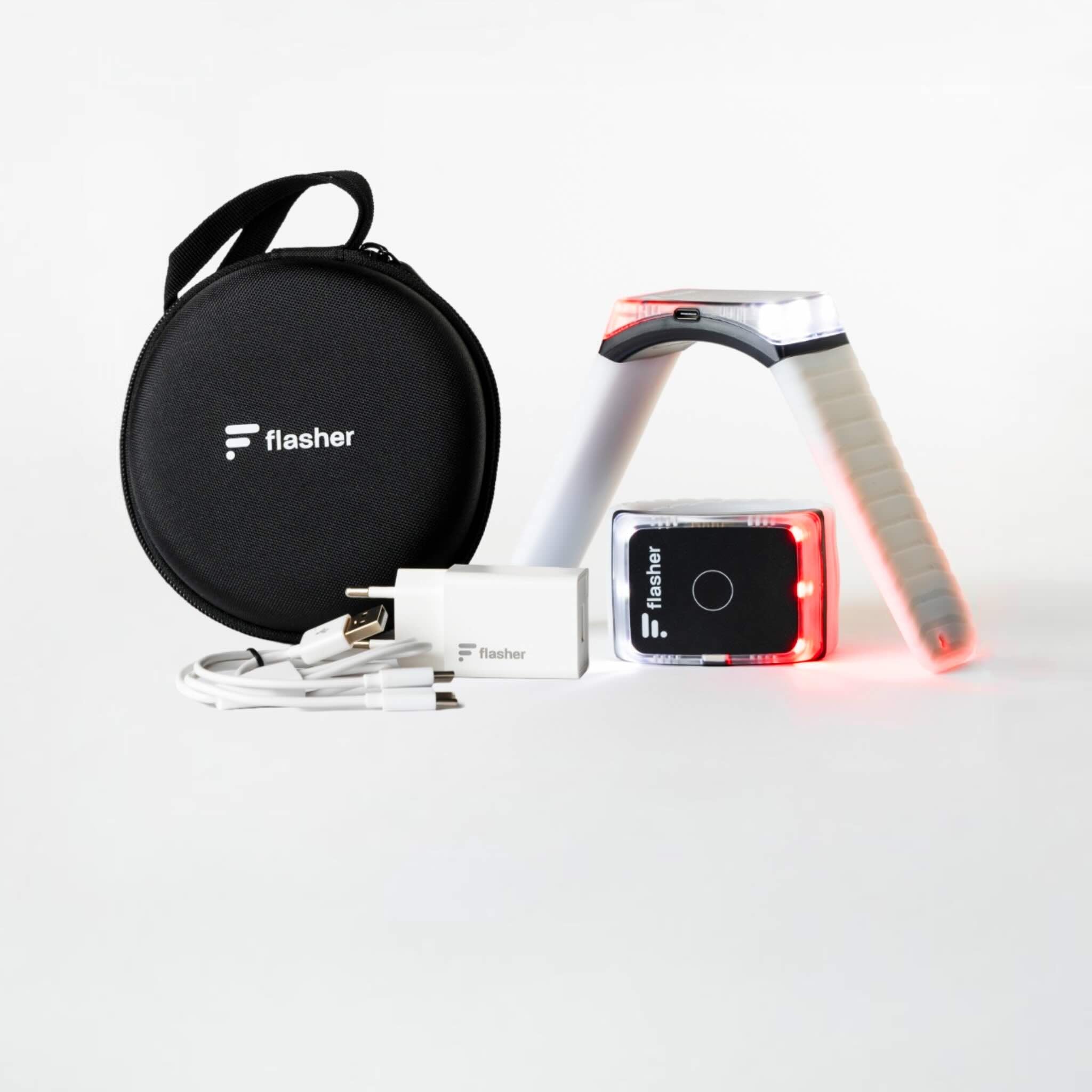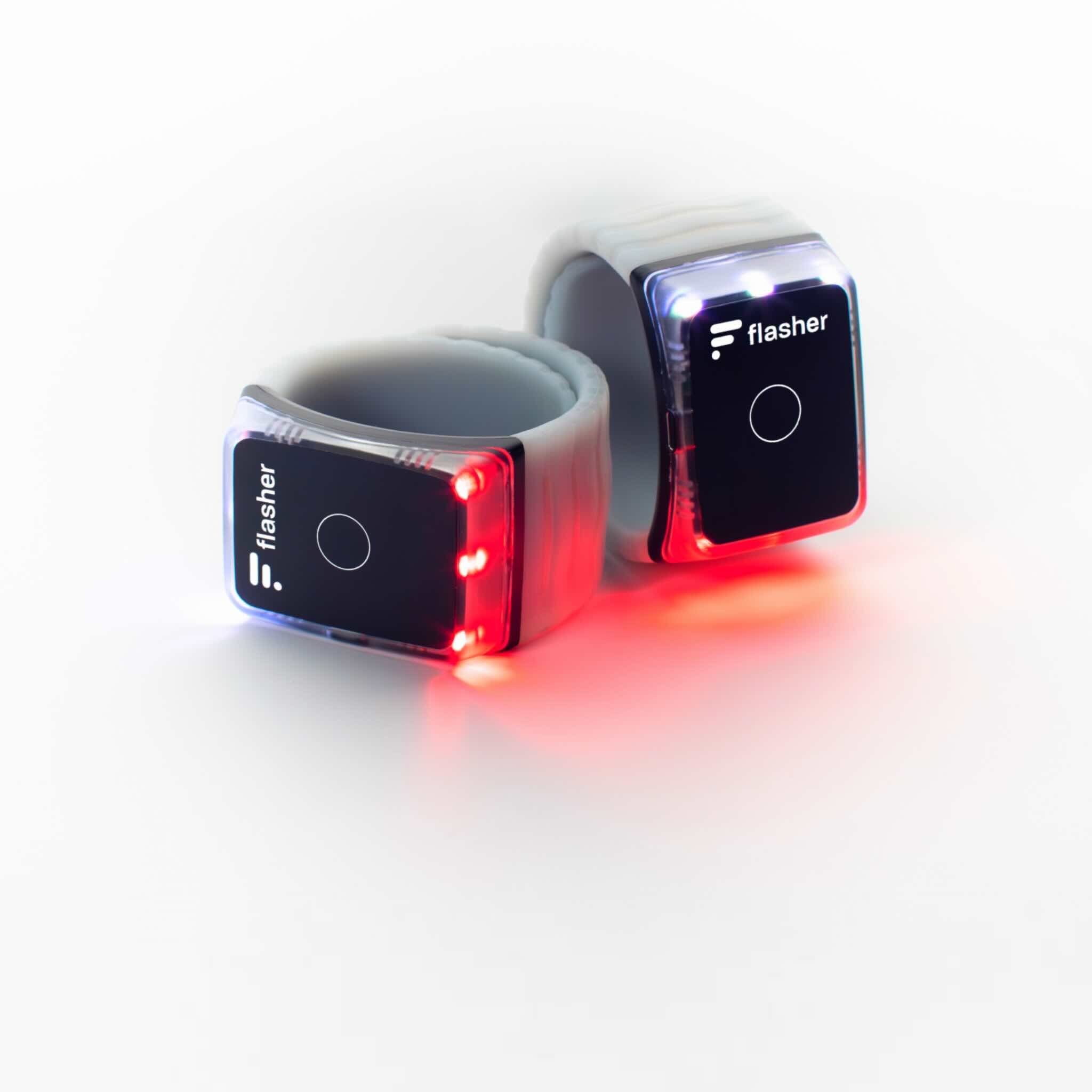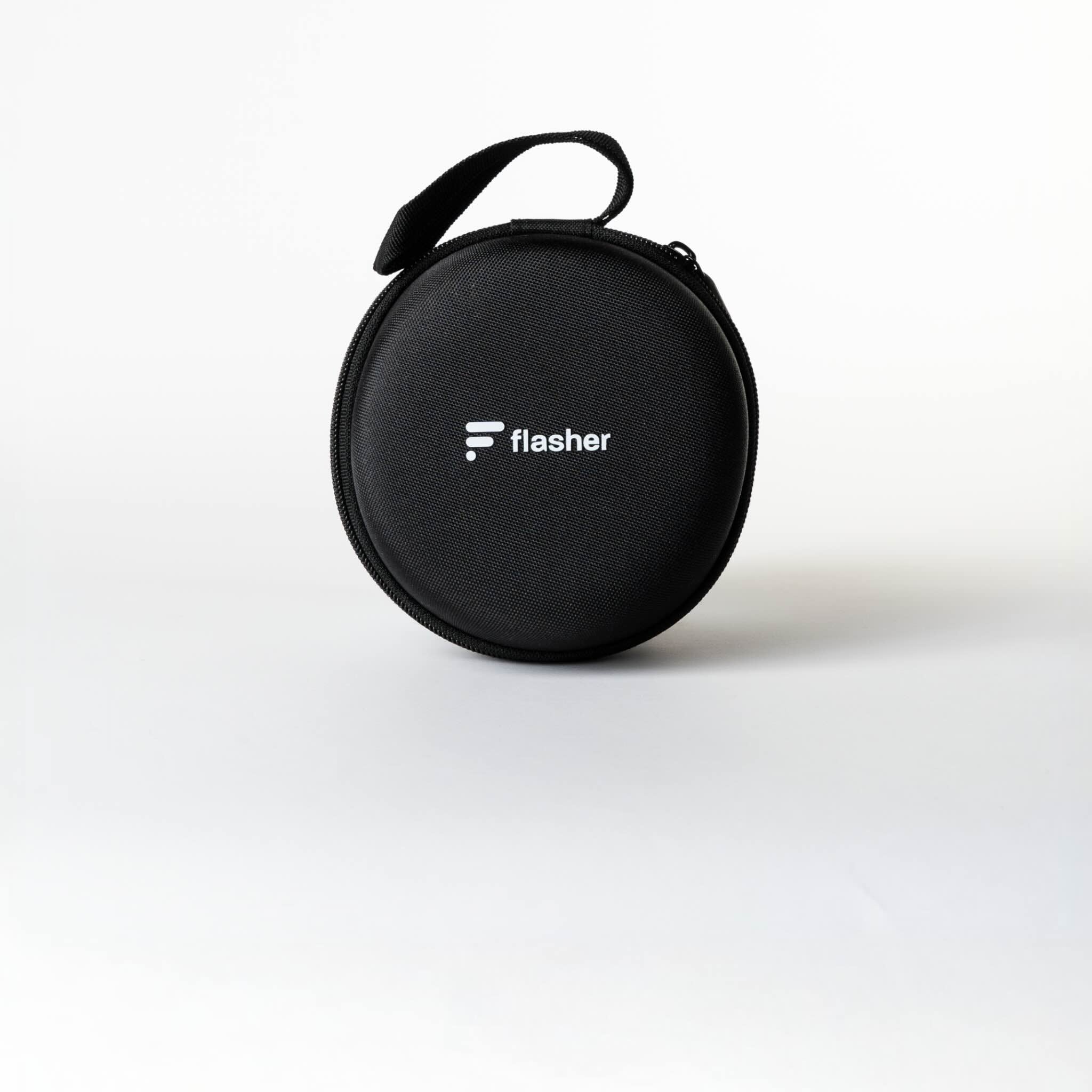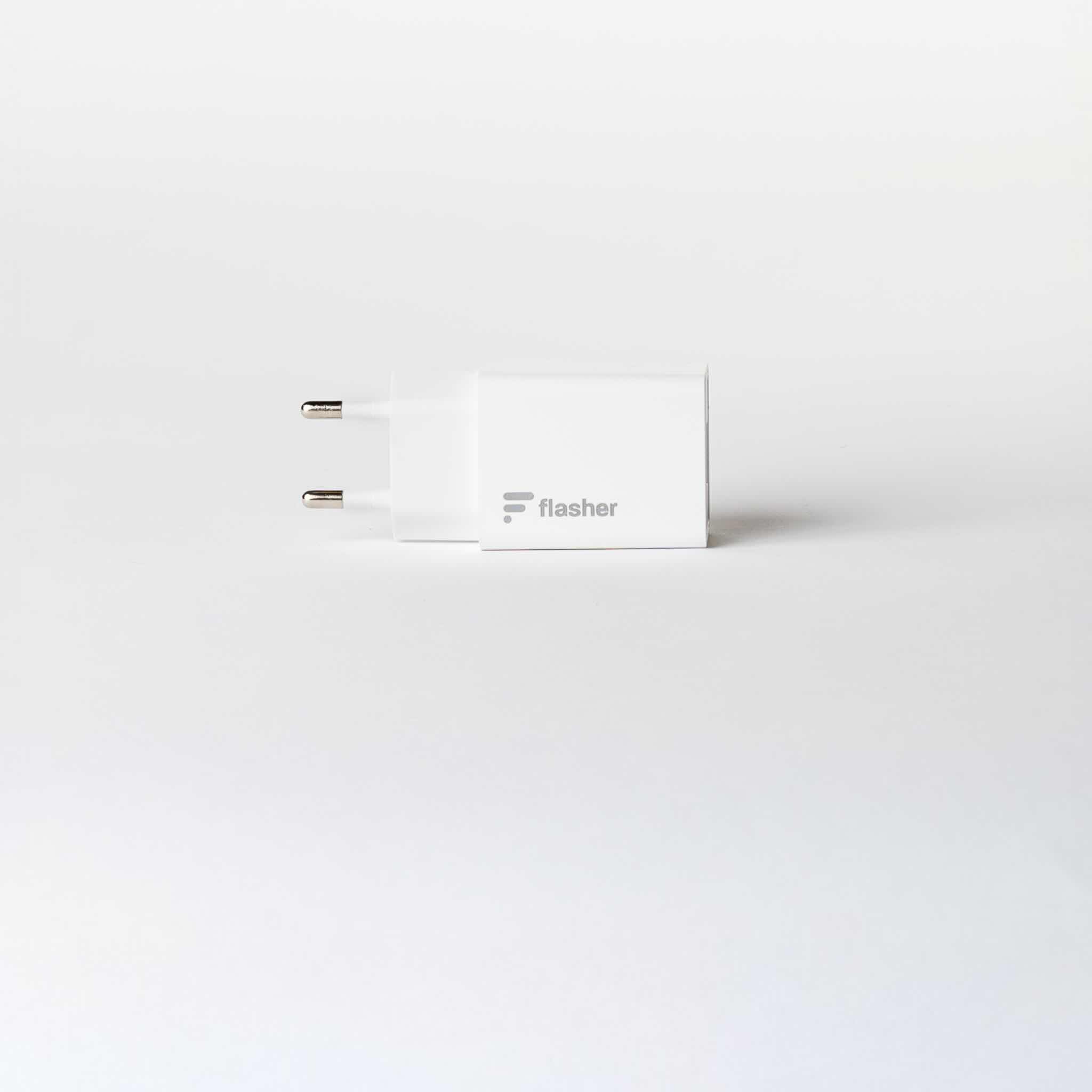6 tips for safe cycling in the dark
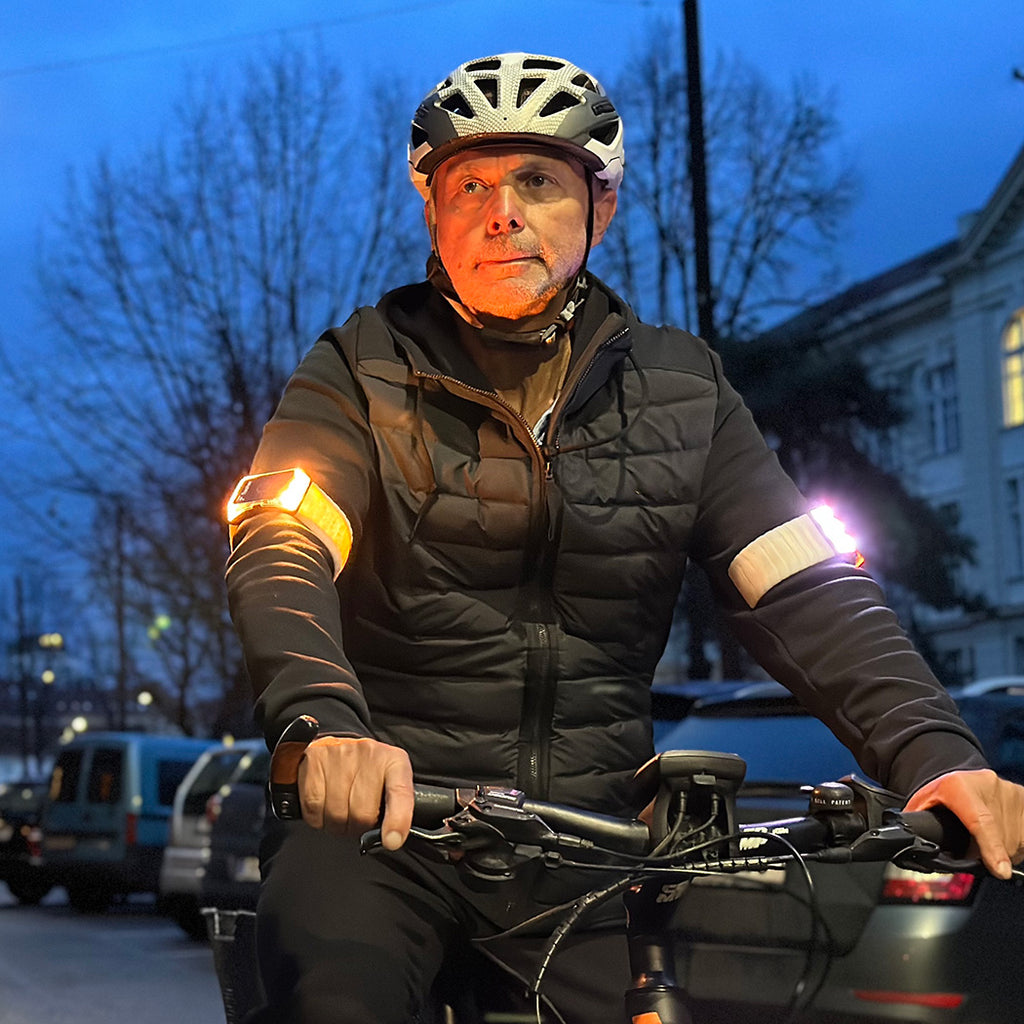
There are far fewer people on the streets at night than during the day. Nevertheless, according to surveys by the German Road Safety Council, more than a third of accidents occur at night. This is because darkness is more stressful for both the eyes and the brain , contrasts are perceived more poorly and fatigue increases the ability to react .
In order to be safe on the road even in the dark, you have to take a few special technical aspects into account and adapt your behavior to the extraordinary situation.
A few things should be clear: Your safety at night is most improved by good visibility. It is also important to always be focused and attentive while on the move. Here we have summarized a few of the most important tips for more safety when cycling in the dark:
1. Tip: Check minimum lighting before setting off
Visibility begins before you get on your bike for the first time at night. When visibility is poor or after dusk, a stationary, white headlight pointing forward is just as mandatory as a red taillight pointing backwards. In addition, the bike is only safe to ride if it has the minimum required equipment .
- However, the best equipment is of no use if it is not functional. Before setting off at night, it is important to check whether the headlights and taillights are working. So check the following:
- Are the lights free of dirt and contaminants?
- Are the lights undamaged?
- Is the headlight correctly adjusted and visible from the front? Does the headlight illuminate the road correctly and does not blind oncoming traffic?
- Is the rear light correctly visible from behind and not covered by the saddle, bike rear or saddlebags?
- For permanently mounted lights: Does the alternator provide enough power so that the lights shine brightly enough?
- For removable lights: Is the battery sufficiently charged for the upcoming journey?
Tip 2: Invest in additional lighting
High visibility clothing
Light-colored clothing is all well and good and serves a certain role in increasing visibility. Despite this, light-colored clothing is less visible when cycling in the dark than other options such as high-visibility clothing. The biggest flaw with phosphorescent clothing is that its usefulness is dependent on a light source. So unless you are illuminated by a car headlight or other light while cycling in the dark, high visibility clothing is effectively just very light clothing. High visibility clothing is therefore particularly useful during the day, but has some of the same weaknesses as reflectors at night.
Reflectors
Even if reflectors are clearly visible when illuminated, they are still dependent on an external light source. Reflectors also have the problem that they do not phosphorescent light (i.e. absorb light from one source and emit it in all directions) but only reflect it. Reflectors are only ever clearly visible from the direction from which they are illuminated. In traffic, this usually means that reflectors are seen when they are in front of a car's headlight. Nevertheless, reflectors must be part of the standard equipment on the bike, as they improve visibility in an extremely simple and cheap way.
Active lighting is best
However, sufficiently bright, active lighting is king when it comes to additional visibility. This is also the reason why reflectors are sufficient during the day, but the law requires active lights at dusk and in bad weather. Every car uses bright LEDs when driving, lighting, signaling and braking in order to see and be seen.
Likewise, when cycling in the dark, you should use ultra-bright LEDs for as many elements as possible. The flasher turn signal bracelets function as 360° lighting at the driver's eye level, as well as an all-round visible turn signal and as an emergency brake light. With the bracelets you are visible much earlier than if you just use the hand signal. The sooner you are seen, the more time other road users have to react.
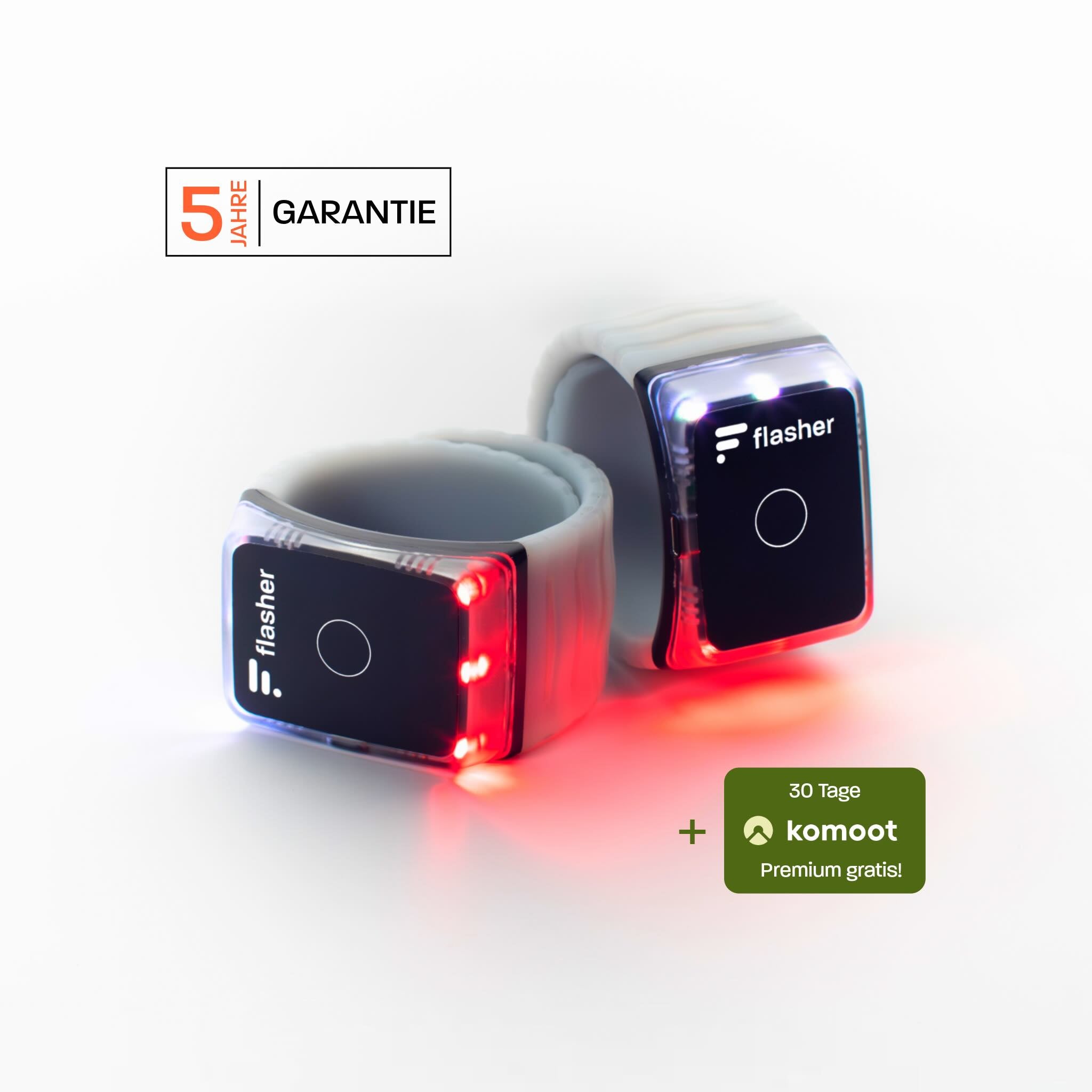
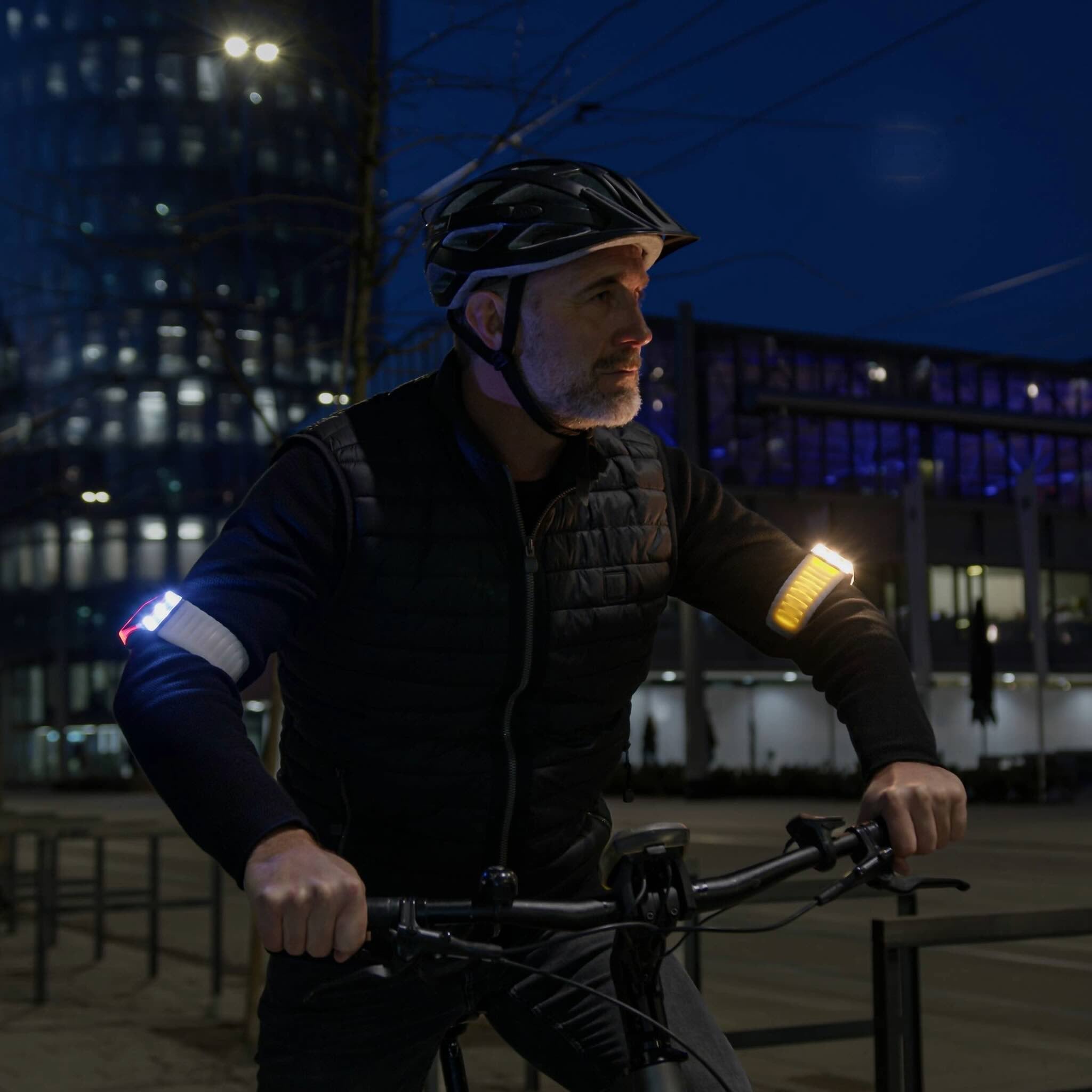
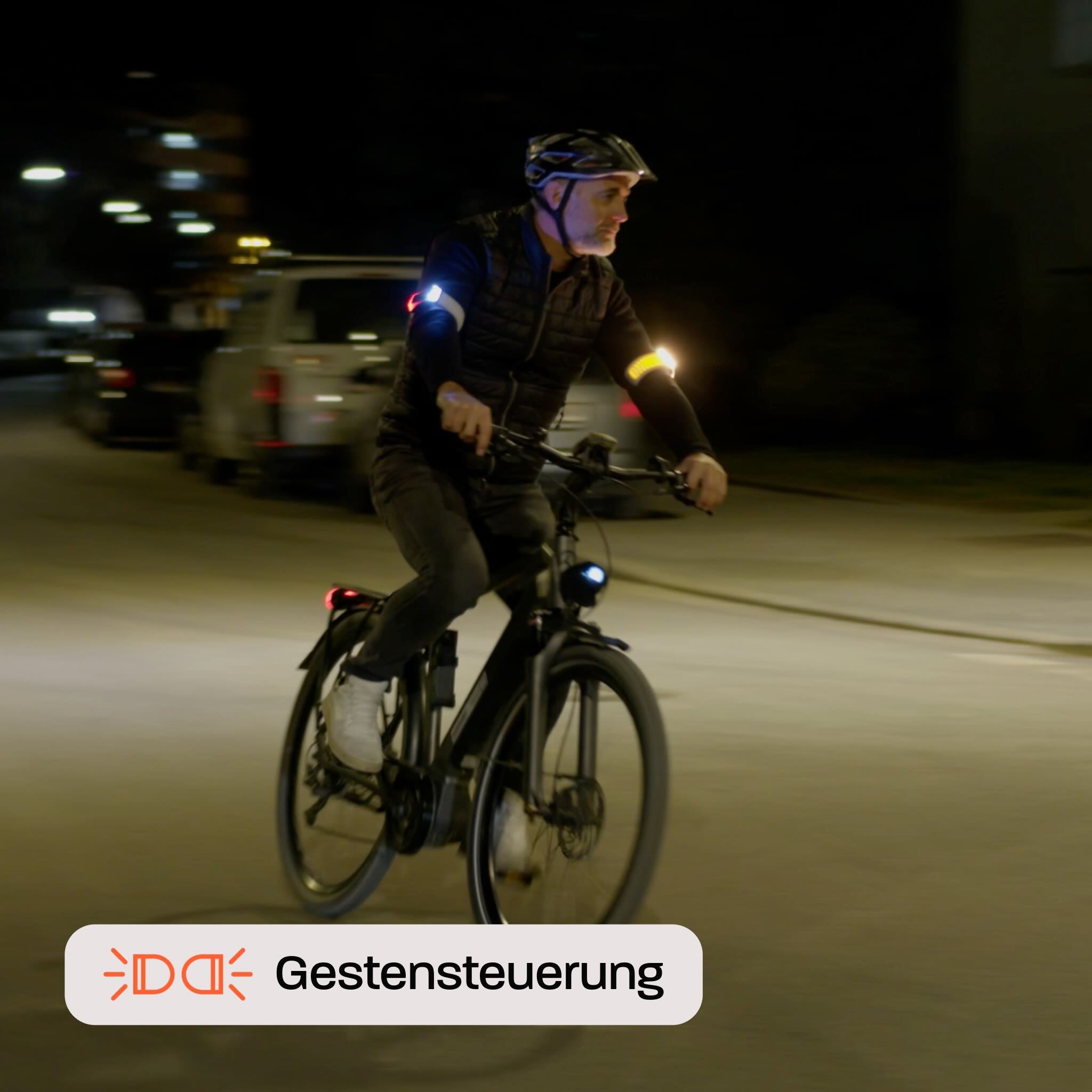
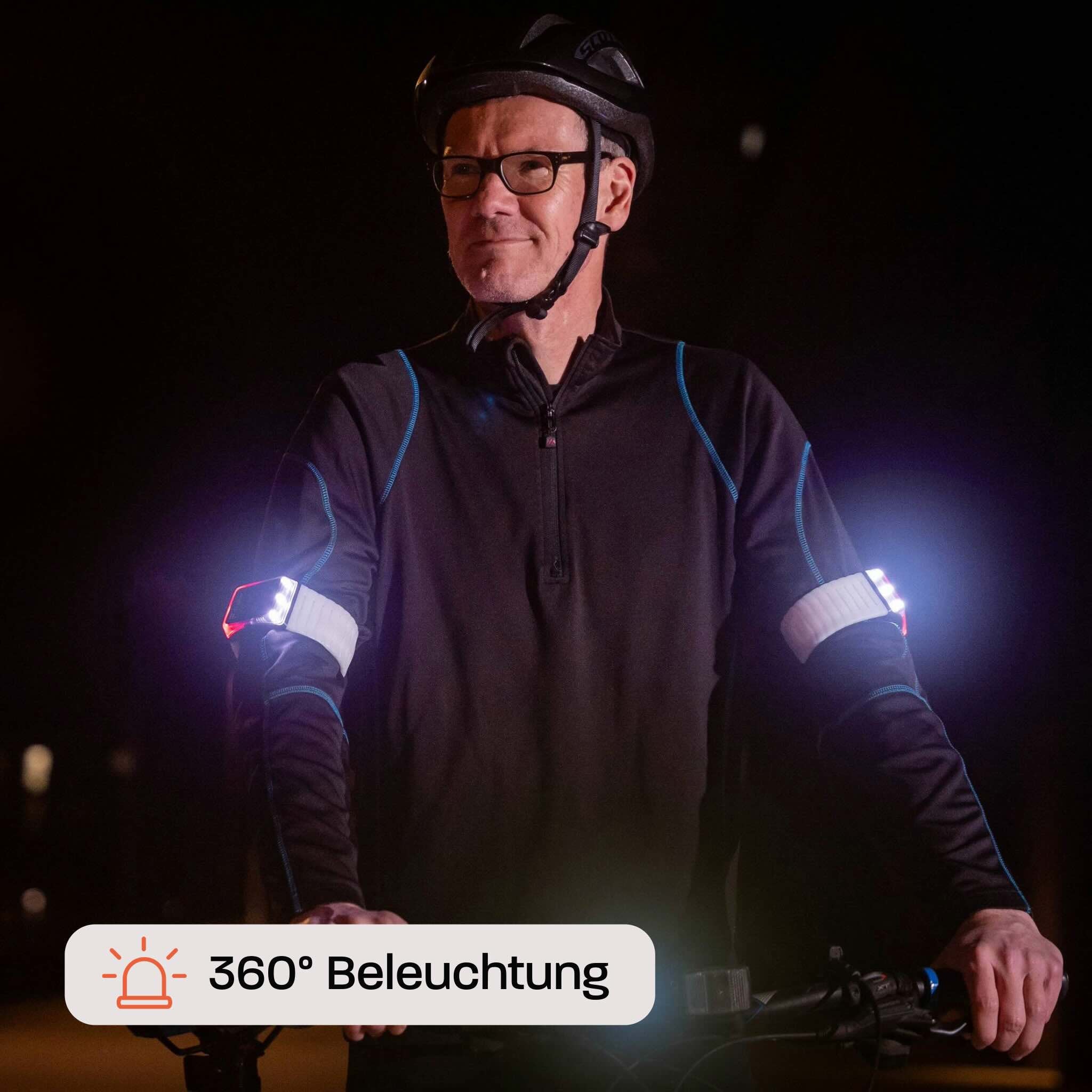
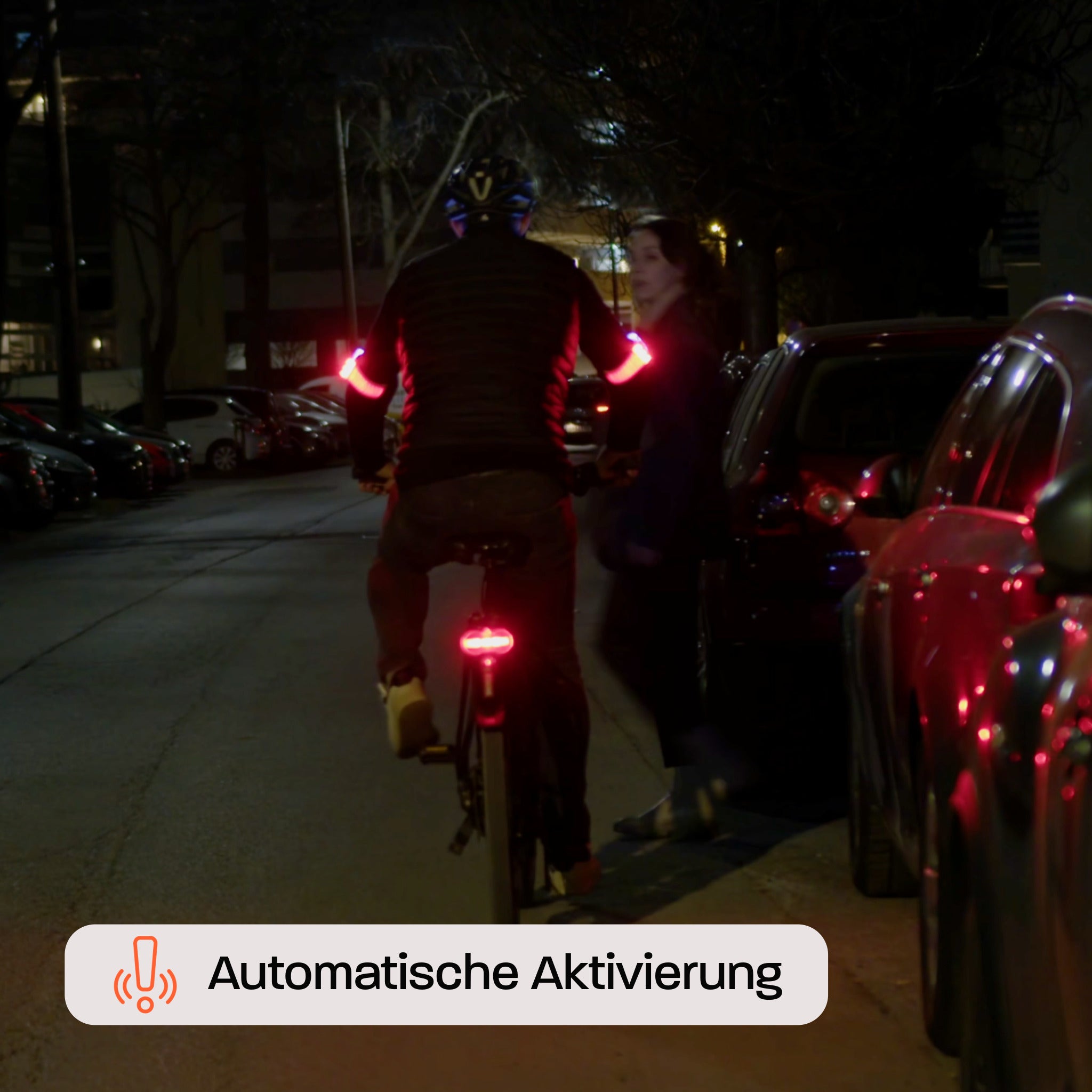

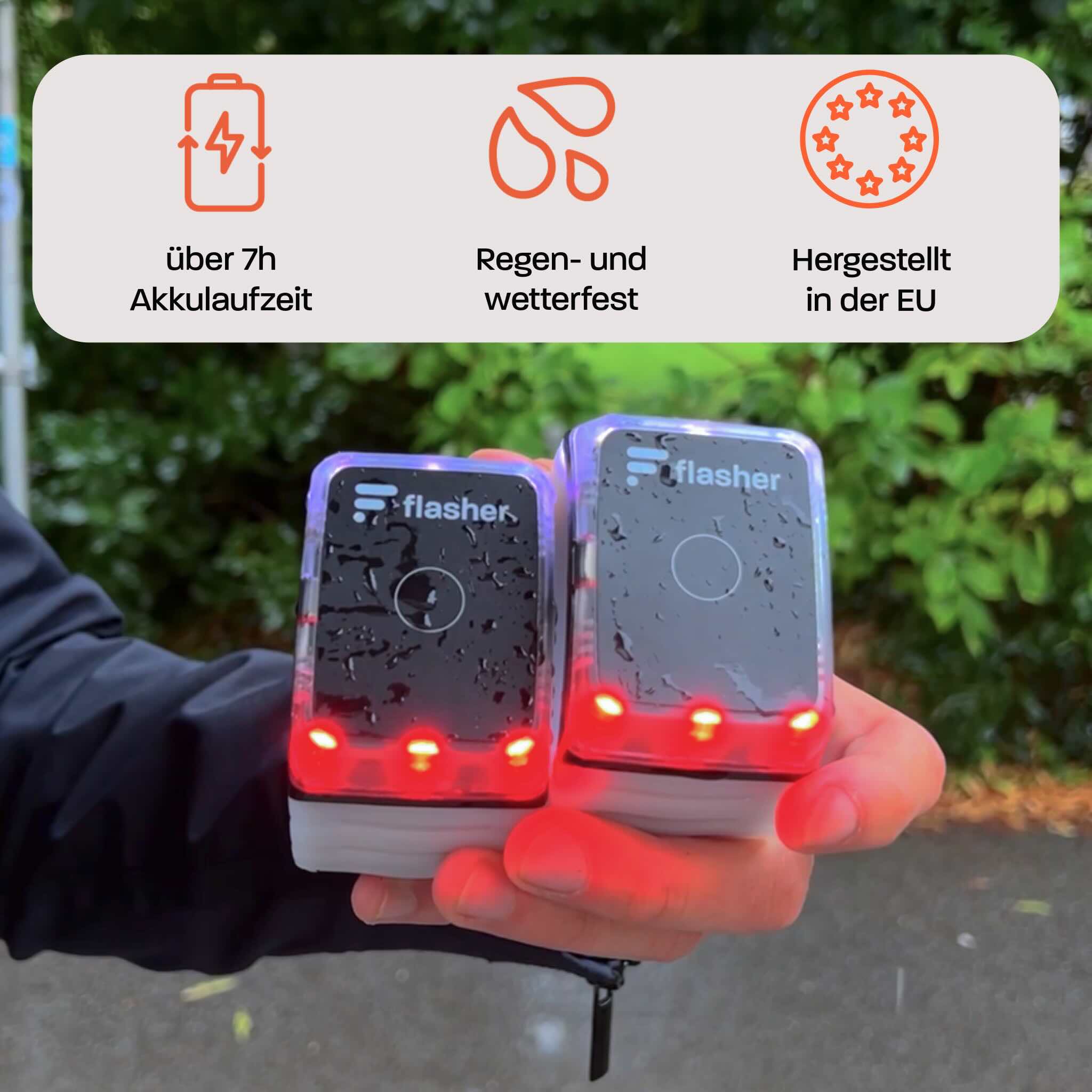
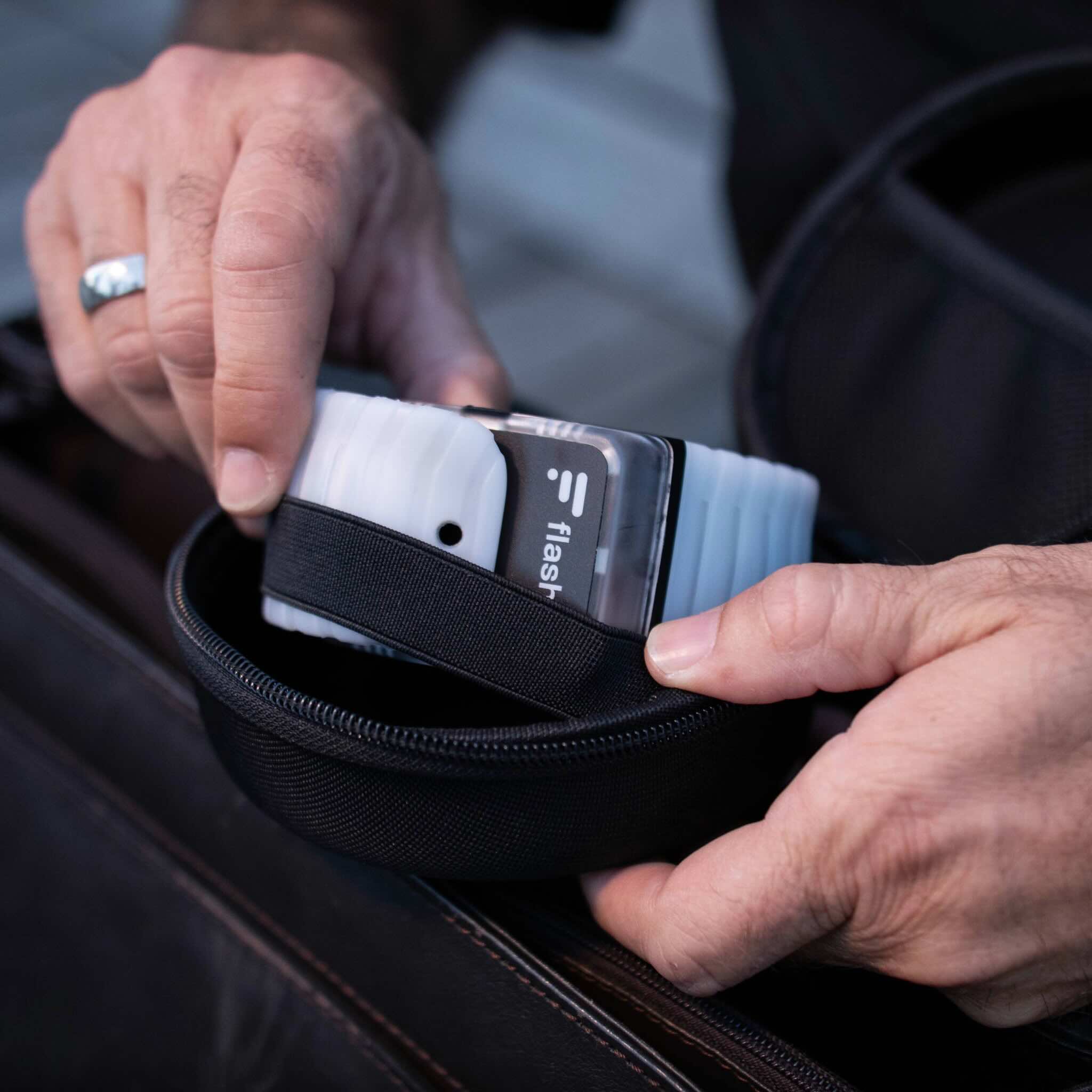
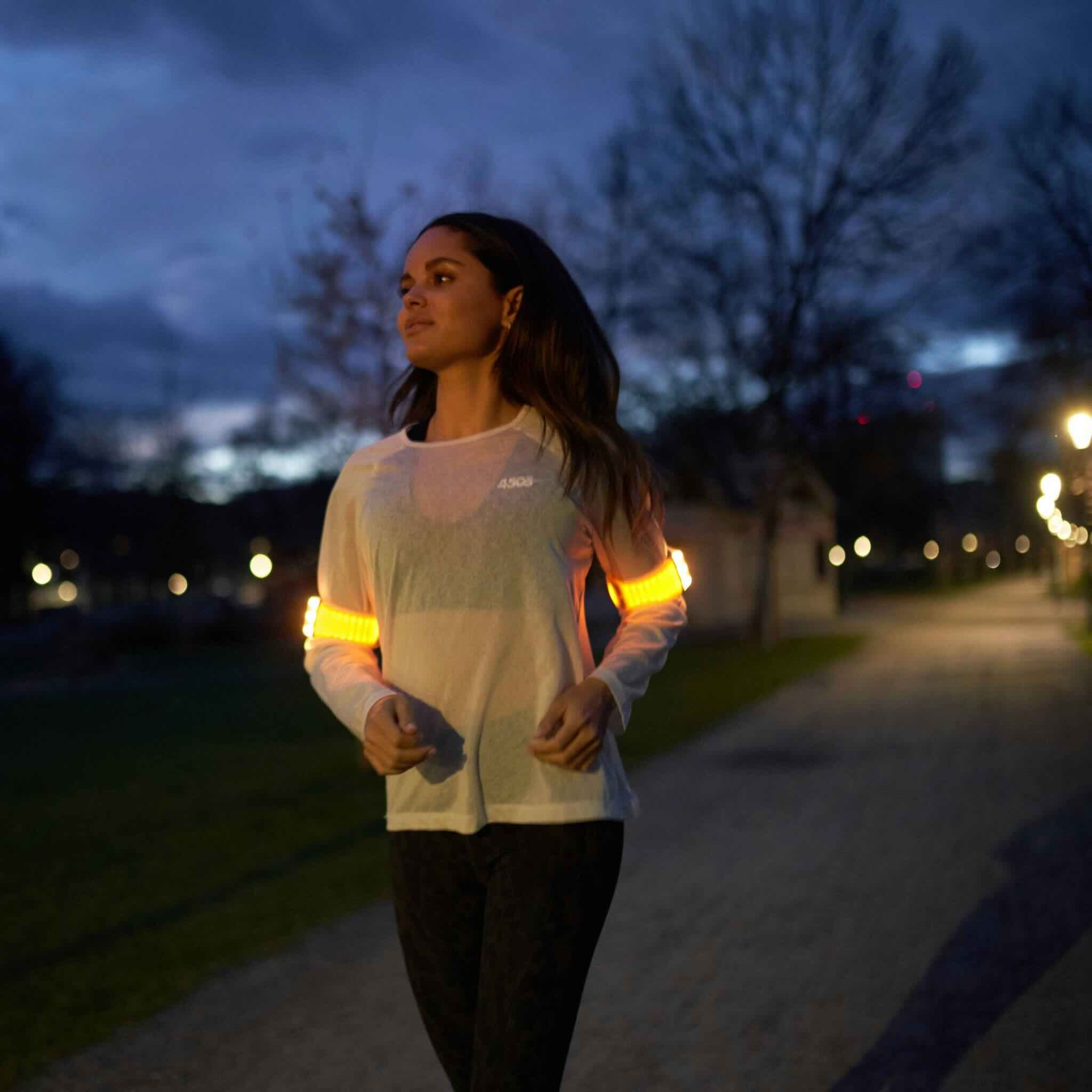
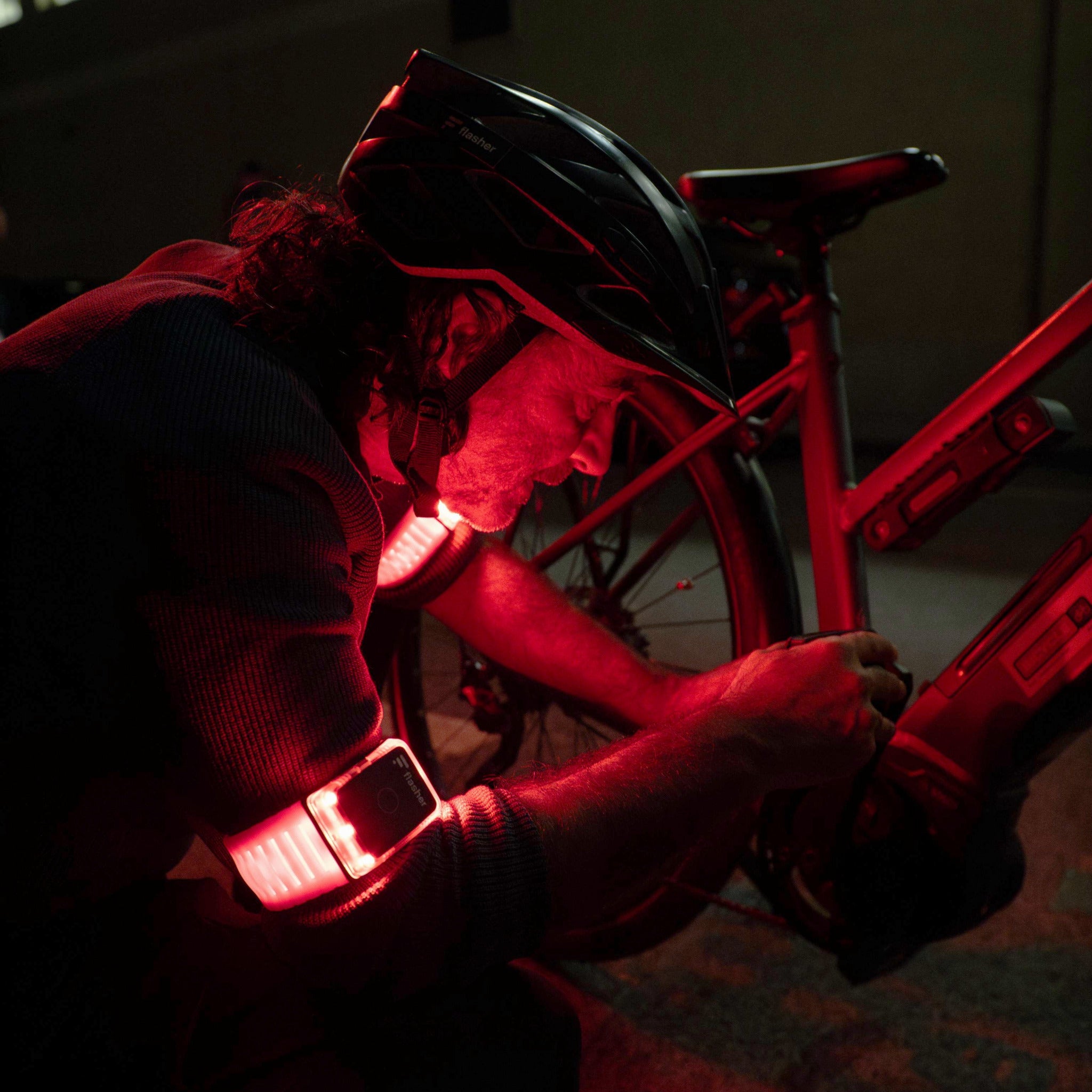
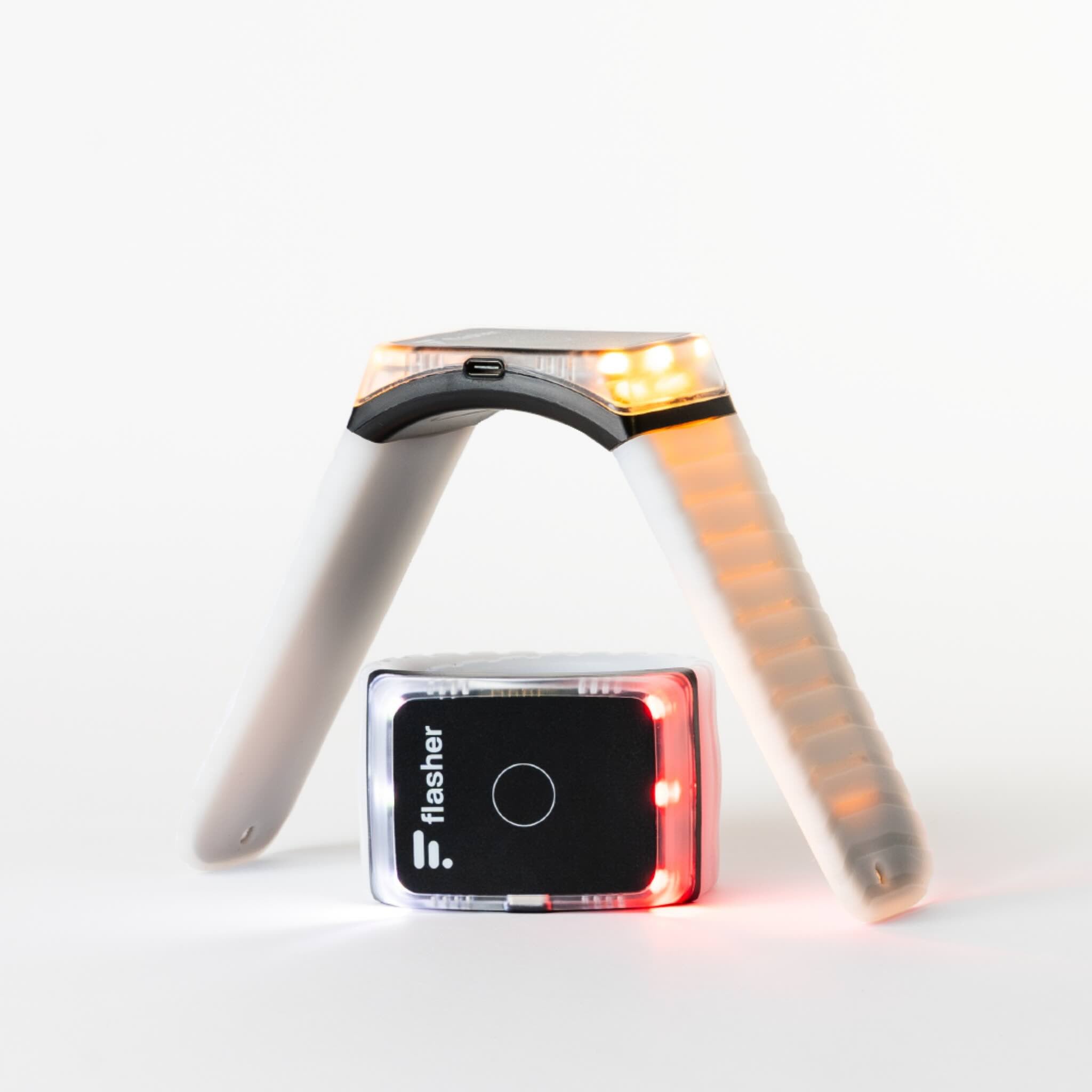
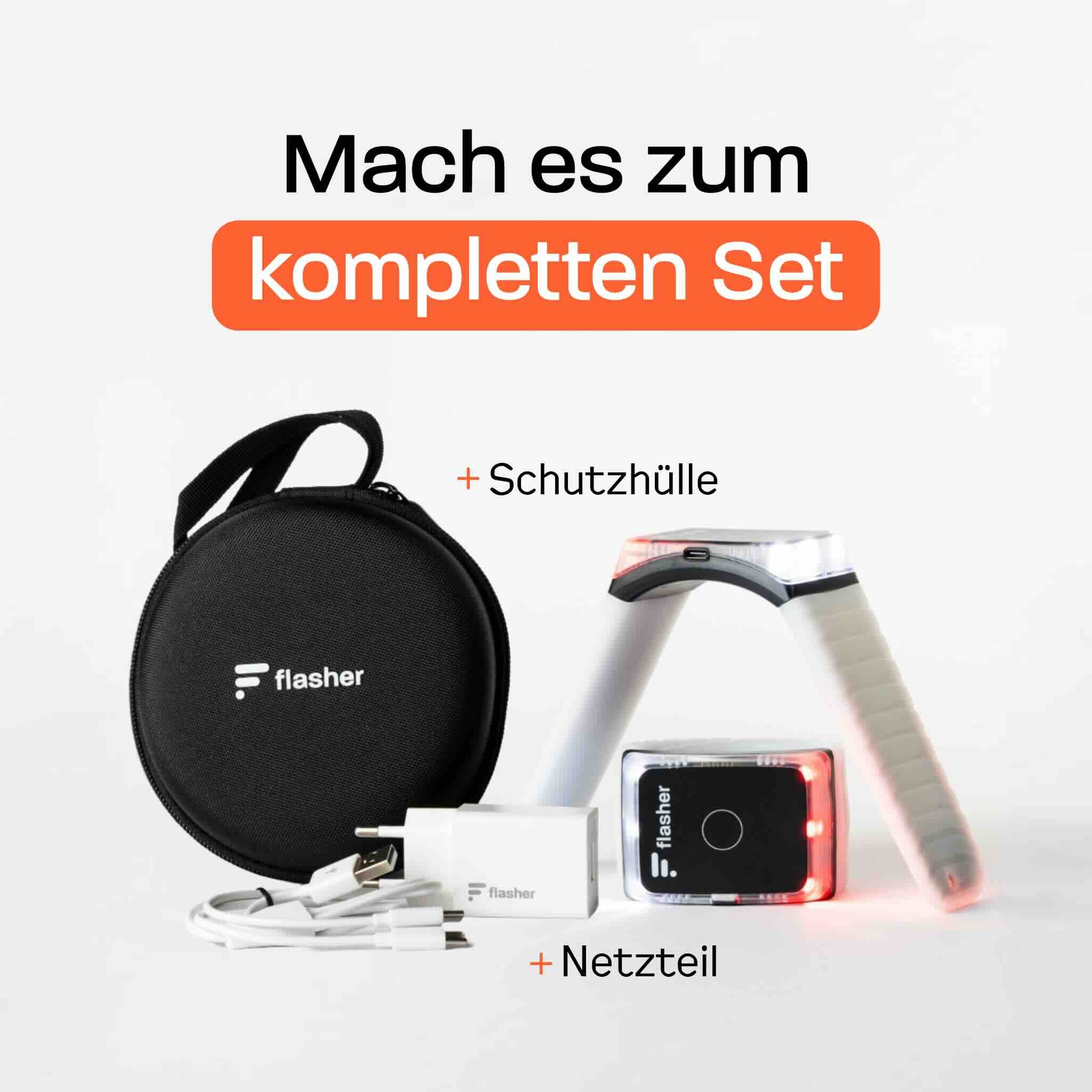
Flasher Duo
The smartest bicycle and e-scooter lights in the world:
- Gesture control turn signal indicators
- 4 modes with ultra-bright 360° LEDs
- Automatic emergency brake lights
- Compliant with road regulations & water-resistant
- Additional features via Flasher app [optional]
3rd tip: Think for other road users
Making yourself visible early makes it easier for others to respond to you correctly and in a timely manner. Even if the principle of trust in traffic applies just as much at night as it does during the day, you should take into account that driving in the dark is also more strenuous for other road users. So if you think for others a little more than usual when cycling in the dark and behave more clearly, slowly and more considerately, you will reduce your own risk of accidents.
Consider the following: The Good Vision Board (KGS) has stated that one in five people in traffic has night vision problems. Examples of this include blurriness when driving at night or particularly strong glare from oncoming lights. So when you turn, consider that the person in oncoming traffic might not have actually noticed you yet and give yourself a little more time.
Or keep in mind that the other participants in traffic could also be tired and react more slowly than during the day.
- However, the best equipment is of no use if it is not functional. Before setting off at night, it is important to check whether the headlights and taillights are working. So check the following:
- Are the lights free of dirt and contaminants?
- Are the lights undamaged?
- Is the headlight correctly adjusted and visible from the front? Does the headlight illuminate the road correctly and does not blind oncoming traffic?
- Is the rear light correctly visible from behind and not covered by the saddle, bike rear or saddlebags?
- For permanently mounted lights: Does the alternator provide enough power so that the lights shine brightly enough?
- For removable lights: Is the battery sufficiently charged for the upcoming journey?
4. Tip: Leave enough distance from parked cars
In addition to moving traffic, stationary traffic also poses an increased danger:
Dooring - a situation in which a street-side door of a parked car is opened at the moment when cyclists drive past, causing them to crash into the car door - already occurs during the day. In most cases, the person who opens the door is at fault. However, the accident and the associated inconveniences naturally affect the cyclist. Dooring often occurs because the door is not sufficiently checked before opening to see whether it will impede other traffic.
If you are not equipped with additional lighting such as flashers, you will of course be less visible when cycling in the dark, which increases the risk of dooring accidents.
Here you should use additional lighting that is in the driver's field of vision and can also be seen from the front (i.e. in the side or rear view mirror of the parked car). You can also adjust the speed to the poorer visibility and increase the distance from parked cars. It is best if the lighting not only identifies the vehicle, but also the shape of the driver. There is usually more than 30 cm between the outermost point of the body and the middle of the bike. If the person in the car only pays attention to the bike, they may think there is enough distance and then bump into the cyclist's arms or body when they open the door.
5. Tip: Take special care at contact points (exits, intersections, protective paths)
Of course, thinking for others is particularly important at contact points where you interact with other vehicles.
You should therefore pay particular attention at exits and intersections to ensure your own safety. As with turning, it is important here to be seen from all sides, ideally. Transport organizations such as the ÖAMTC and the Road Safety Board repeatedly emphasize how important it is to be visible from the side.
But even if you are driving towards protective paths, you should reduce your speed if necessary to prevent a collision with pedestrians. In the best case scenario, pedestrians are also equipped with active lighting (such as Flasher 's jogging mode) or wear reflectors, which then reflect your bicycle headlights. Unfortunately, the majority of people still walk with poor lighting and are therefore difficult to see. In the dark season of September to December, accidents involving pedestrians on protective paths are much more common.
6. Tip: Always stop in safe places
Of course, even during the day, you should always be careful not to suddenly get off your bike in unsafe places. But not all places that are safe during the day are also safe when cycling in the dark.
Due to reduced visibility at night, special care must be taken when dismounting on the road: wherever possible, stand in parking spaces or driveways before getting off your bike. Also make sure that you get off the bike towards the sidewalk, not the side of the street. This way you reduce the risk of being hit by a car that doesn't see you in time in the dark. Even curves that may be clear during the day are more dangerous at night and in the dark. So avoid stopping and getting off directly behind curves or intersections.
A red brake light helps to prevent you from being overlooked during an emergency stop and being hit by traffic behind you. This signals to traffic that you and your bike are stopping and as a car driver you can expect that the cyclist will get off or at least lean to the side after braking.


